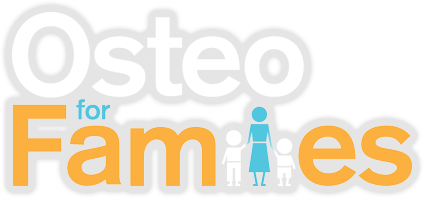Tennis Elbow Pain is also known as lateral epicondylitis. Got a pain in the Elbow? What is lateral epicondylitis and what can you do about it?
Tennis elbow isn’t just for people who play tennis. It should be called ‘builders elbow’, ‘office worker elbow’, ‘musicians elbow’, ‘hospitality worker elbow’, ‘artist elbow’, ‘health professional elbow’ or ‘repetitive job elbow’. Maybe that’s why we just call it lateral epicondylitis!
At Osteo for Families we see lots of patients with lateral epicondylitis and we have conclude that although it's often called tennis elbow so many other professionals experience it.
It can be painful, annoying, limiting and disruptive impacting your life at work and at home. Sometimes you may not be sure of what is causing it, but you just want it fixed. With our Osteo’s qualifications and experience we can help answer some questions about this condition.
What is lateral epicondylitis aka tennis elbow?
Lateral epicondylitis is degeneration and irritation or inflammation of the tendons of your arm where they attach to the bony point on the outside of your elbow.
It’s also commonly called tennis elbow because it is a common injury for tennis players.
What causes lateral epicondylitis
It is commonly caused by overuse of muscles in your forearm which are involved in extending or bringing the wrist back.
The overuse occurs when there are repetitive wrist and arm motions this occurs commonly in tennis with turning your elbow over when hitting a shot, in desk workers who are typing and using the mouse a lot and maintaining positions which stress these muscles.
For those working and serving people, repetitively pouring drinks or making coffees and if you are a builder or construction work repetitive actions such as hammering or holding onto vibrating equipment.
Who can experience Lateral epicondylitis?
Anyone can experience lateral epicondylitis but it commonly affects people who are involved in occupational or recreational repetitive actions such as tennis, builders and office workers.
It commonly occurs between 35 -55 year olds.
Lateral epicondylitis can hang around between 4 weeks and over a year.
What are the symptoms of lateral epicondylitis?
Tenderness at your elbow on the side furthest from your body when your palm is up
Pain in the muscles of your forearm
Pain near your elbow worse with arm and wrist movements
Weak grip
What do I do if I have lateral epicondylitis?
The biggest thing is to change the aggravating factor or cause. You need to avoid the thing that is making it worse.
This may mean changing your work environment, tools, tasks, or resting from sports.
You may also need to modify some of you lifestyle activities such as when lifting shopping bags try lifting with your palms facing up and elbows bent.
How can an osteopath help with lateral epicondylitis?
If you suspect lateral epicondylitis a visit to an osteo who will take a history of the injury and examine your elbow may help in confirming your suspicions of what is causing the pain.
Your osteo will be able to assess if there are biomechanical issues in your wrist, shoulder, neck or back contributing to your pain and condition.
Osteopaths use hands on techniques including soft tissue massage, mobilisation of joints and other techniques to improve restrictions of movement and reduce pain. By releasing tightness in the muscles and increasing movement in the joints it reduces the stress on the tendons pulling on the elbow
Osteopaths will also offer advice on how to modify activities if needed to reduce the irritation.
When appropriate, exercises will be provided to strengthen and support the tendons aiming reduce the likelihood of the injury occurring again.
What else can I do for lateral epicondylitis?
You may be recommended to use a brace; the idea of these braces is to change to point of pull so that it is not occurring on the irritated spot.
This is not a long term solution but can help in reducing the aggravating qualities of the irritating activities
A doctor or pharmacist may be able to provide recommendations on pain relief through medications or creams.
How can I reduce the risk of developing lateral epicondylitis?
Learn to share the load of the work by using your shoulder and upper arm muscles
Stick to the middle of your range of motion avoid overreaching or bending
Avoid making the same hand and wrist movements over and over. If you cannot avoid these tasks take regular breaks
Set up your workspace to reduce stress on arms and wrists - included support for forearms on desk, ensure wrists and kept straight not bent forwards or backwards
Try to change up the jobs you are completing
If using tools for work - use tools with a bigger grip, add padding if needed to make bigger and help absorb some shock, hold the tools with a looser grip
On the tennis court make sure you warm up, have a racket that isn’t too heavy or add a shock absorber on your tennis racket
Visit a coaching professional to give advice on how you perform movements in tennis
Use 2 hands when doing a back hand
Do stretches and exercises to stretch and strengthen your wrist and forearm muscles
Getting onto your elbow pain early and not letting it get worse can help in reducing the time spent with the condition.
Osteopaths treat patients from a wide variety of backgrounds who present with lateral epicondylitis. If you would like to book a consultation with one of our osteopaths please follow this link https://osteo4families.cliniko.com/bookings#location otherwise feel free to check out our website www.osteo4families.com.au
Footnotes:
https://www.csp.org.uk/public-patient/rehabilitation-exercises/tennis-elbow
https://www.webmd.com/pain-management/prevent-tennis-elbow#2
